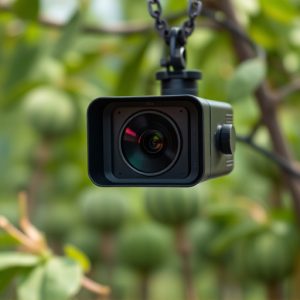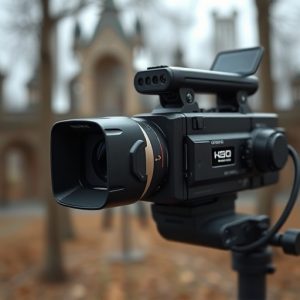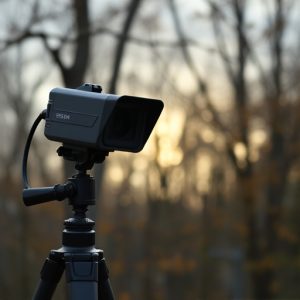Spy Camera Detection: Reflecting Light for Indoor Night Vision
Spy cameras hidden in everyday items like clocks or light bulbs offer secretive surveillance with ad…….
Spy cameras hidden in everyday items like clocks or light bulbs offer secretive surveillance with advanced features such as night vision and motion detection, raising ethical debates about privacy invasion. The Science Behind Light Reflection Detection uses advanced optical principles and computer vision algorithms to identify these hidden cameras, focusing on the unique patterns created by light reflecting off camera lenses or reflective surfaces. This method is highly effective for detecting miniature indoor spy cameras with night vision during nighttime conditions, where it leverages ambient light and strategically placed illumination to enhance contrast. Night vision goggles and thermal imaging devices further aid in scanning hard-to-reach areas. Despite challenges like lighting conditions and advanced camera technologies, this technique offers significant advantages in discreet surveillance and AI-assisted accuracy, making it a powerful tool for identifying hidden cameras in controlled environments.
“Uncover hidden threats with our in-depth exploration of a cutting-edge spy camera detection technique centered around light reflection. Understanding the insidious nature of indoor spy cameras equipped with night vision, we delve into the science behind light reflection detection, offering a practical guide to implementation. From identifying subtle reflections to mitigating risks, this method promises enhanced security.
Learn about its advantages, limitations, and glimpse into future prospects as we navigate the evolving landscape of spy camera technology.”
- Understanding Spy Cameras and Their Capabilities
- The Science Behind Light Reflection Detection
- Implementing the Technique for Indoor Settings with Night Vision
- Advantages, Limitations, and Future Prospects of This Method
Understanding Spy Cameras and Their Capabilities
Spy cameras, also known as hidden cameras, are sophisticated devices designed for secretive surveillance. These tiny yet powerful tools can be easily concealed in everyday objects like clocks, pens, or even light bulbs, making them hard to detect. Indoor spy cameras with night vision capabilities are particularly concerning as they can capture high-resolution footage in low-light conditions, allowing for covert observation around the clock.
The advanced features of indoor spy cameras, including infrared technology and motion detection, enable them to operate discreetly while providing clear images. This makes them a favorite among those seeking to safeguard their privacy or investigate potential security breaches. However, the widespread availability and ease of use also raise concerns about privacy invasion and ethical considerations surrounding their deployment.
The Science Behind Light Reflection Detection
The Science Behind Light Reflection Detection involves utilizing advanced optical principles and computer vision algorithms to identify hidden cameras, especially in indoor settings with limited natural light or night-time conditions where many spy cameras are designed to operate discreetly. This technique capitalizes on the reflection of ambient light off the lens or other reflective surfaces within a camera, creating unique patterns that can be analyzed. When an Indoor Spy Camera With Night Vision is activated, it emits infrared light for night vision, which has different properties than visible light. By capturing and processing images in both infrared and visible spectrums, advanced algorithms can detect subtle discrepancies caused by the presence of a camera’s lens or reflective coatings.
The reflection patterns are then compared against known signatures to confirm the existence of a hidden camera. This method is particularly effective for detecting miniature cameras, which often have smaller lenses and less reflective surfaces but still produce unique light reflections when illuminated by suitable sources. In environments where natural lighting is scarce, artificial lighting can be strategically placed or modified to enhance the contrast between reflected light and surrounding surfaces, making it easier to identify any anomalies indicative of spy camera activity.
Implementing the Technique for Indoor Settings with Night Vision
Implementing the light reflection technique for detecting indoor spy cameras with night vision involves a strategic approach to leverage ambient light and advanced sensors. During nighttime, when traditional camera visibility is limited, this method becomes particularly effective. By using specialized equipment that can capture and analyze subtle variations in light reflections, it’s possible to identify hidden cameras. The process includes positioning yourself at various angles within the room, casting light onto potential camera locations, and observing any unusual reflective patterns. Night vision goggles or thermal imaging devices further enhance visibility, allowing for a more thorough examination of hard-to-reach areas where spy cameras might be concealed. This technique ensures that even in low-light conditions, indoor spaces can be meticulously scanned for the presence of covert recording devices, thereby providing an additional layer of security and privacy protection.
Advantages, Limitations, and Future Prospects of This Method
Advantages:
The light reflection technique for spy camera detection offers several benefits, especially in indoor settings with night vision capabilities. It is a non-invasive method that doesn’t require physical access to the camera, making it ideal for discreet and remote surveillance. This approach can uncover hidden cameras by analyzing subtle variations in light reflections, which may go unnoticed by the human eye. Advanced technologies like artificial intelligence (AI) can enhance this process, enabling faster and more accurate detection, even in low-light conditions typically associated with indoor night vision spy cameras.
Limitations:
However, there are challenges to consider. The technique’s effectiveness relies heavily on lighting conditions; poorly lit environments or direct sunlight may hinder its performance. Moreover, modern spy cameras designed with advanced IR technology or specialized lenses can reduce the reflectivity of light, making detection more difficult. False positives also remain a concern, as non-camera sources of light reflection could potentially trigger alerts, leading to unnecessary investigations.
The light reflection technique offers a promising approach to detecting hidden spy cameras, particularly in indoor settings with night vision capabilities. By utilizing specific lighting angles and analyzing reflections, this method can expose covert surveillance devices that might otherwise go unnoticed. While it has its advantages, such as non-intrusive nature and effectiveness against high-tech spy cameras, limitations exist, including potential blind spots and the need for precise technique application. Future research should focus on refining algorithms to process real-time data from multiple reflections, making this method even more accessible and reliable for indoor spy camera detection, especially in the context of enhancing home and office security with Indoor Spy Camera With Night Vision solutions.


